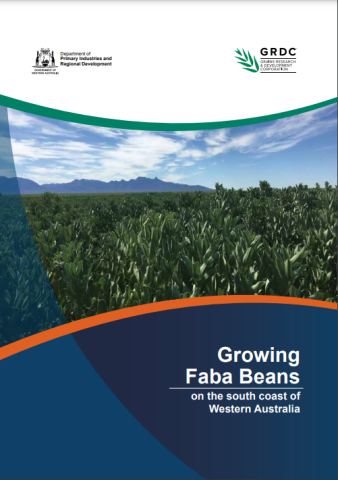There are many well understood reasons for growing legumes, such as:
• fixing nitrogen to increase soil fertility and reduce input requirements
• providing disease breaks in cereal–canola rotations • increasing income source diversity
• increasing diversity of crop protection chemicals to reduce pressure on weeds, pests, and diseases developing pesticide resistance
This guide has been developed for the medium- to high-rainfall zone of southern Western Australia (WA) to encourage faba bean adoption.
Download the guide below



